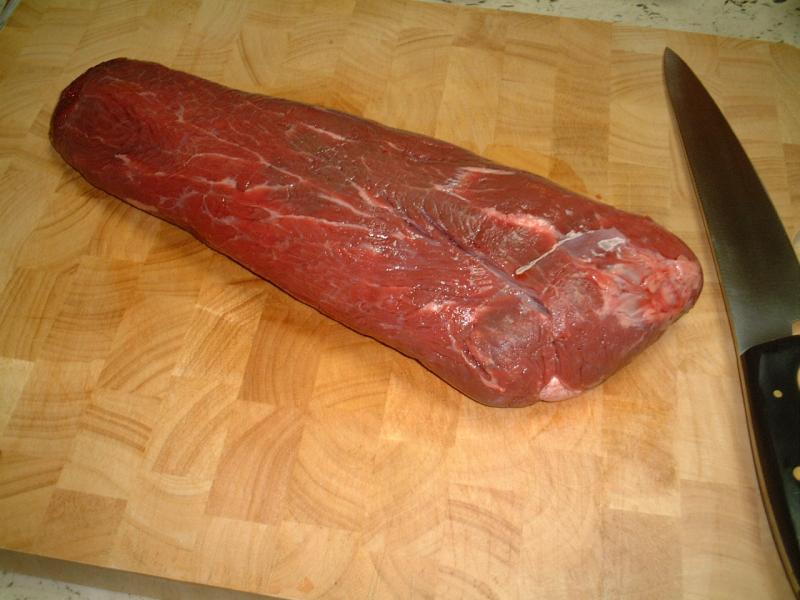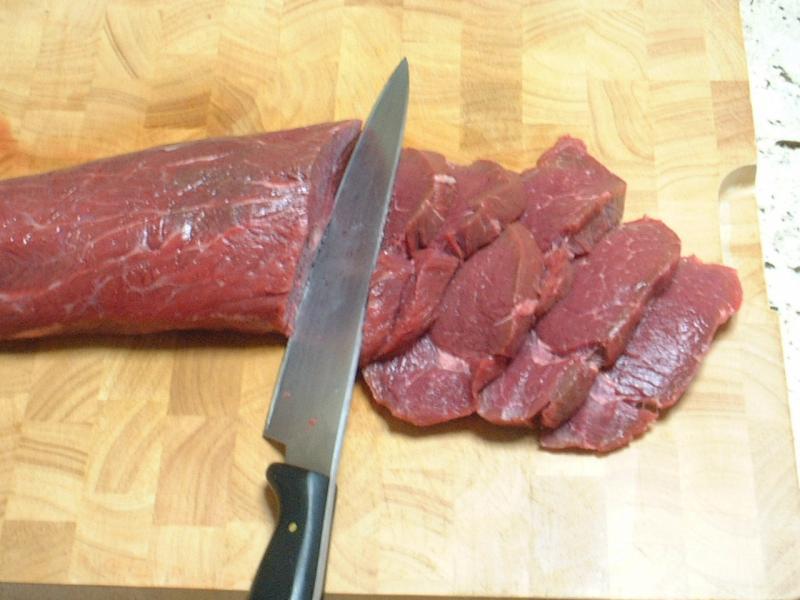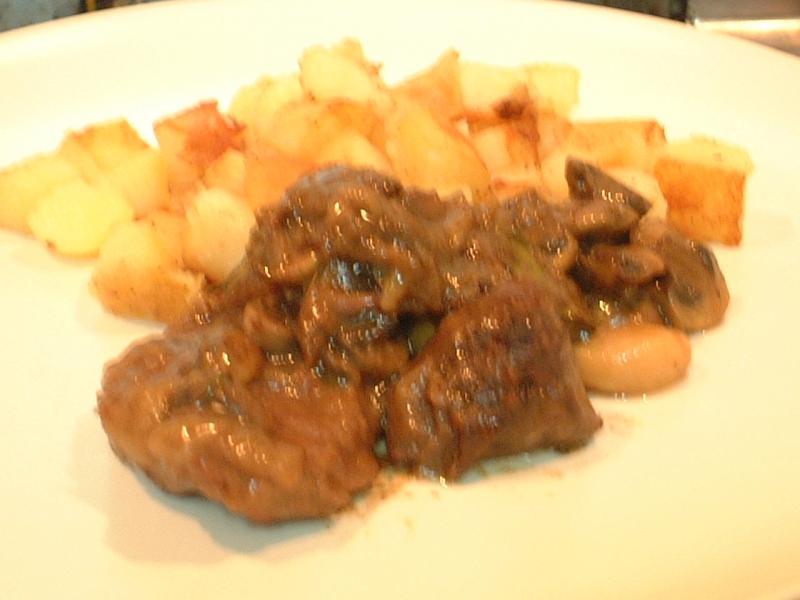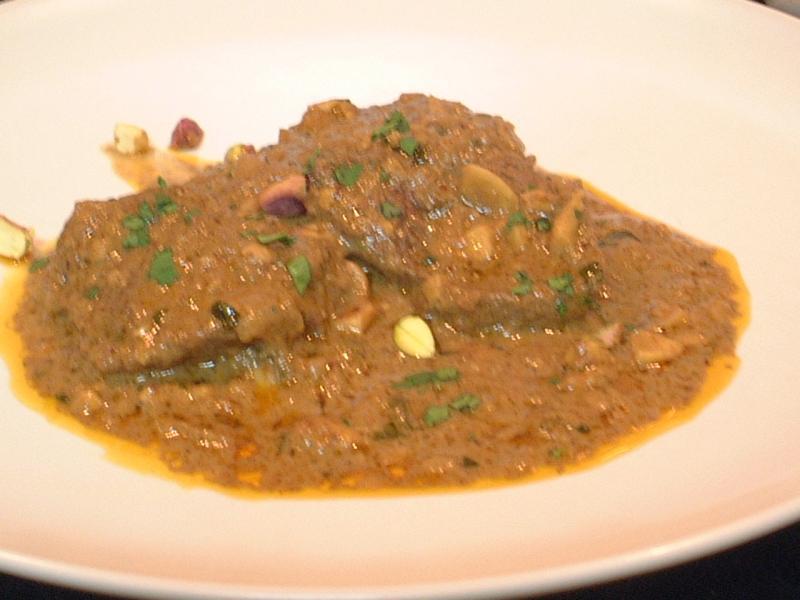-
Posts
1,728 -
Joined
-
Last visited
Content Type
Profiles
Forums
Store
Help Articles
Everything posted by Blether
-
Fash masel' ? ... and ketchup's no in it
-
I can't vouch for good, but this looks authentic:
-
Rotten apples is all wrong. You can get a fairly good French cidre in Yamaya. I've also seen British cider on tap at some of the British pubs in Tokyo & Yokohama. IME French cidre is typically lighter & softer than British, though on the British side I remember Woodpecker as close to that. "Dry Blackthorn" and "Strongbow" brands were stronger and fuller-bodied, whilst at the top of the tree are small-producer ciders / scrumpy from The West Country, as mentioned by Dougal, which are still and run at 6-9% abv, with a maximum around 15%. More detail from the BBC.
-
Great picture, robirdstx. Can I ask about your method ?
-
From foodtimeline there's this and these: - amongst a wealth of others. I'm intrigued to discover under the heading 'digitised period cookbooks' that The Forme of Cury is available online. In December I had some fun reading the recipes in John Mollard's The Art of Cookery (2nd ed., London 1802), online thanks to Google Books. This is of course British rather than Scottish. Thanks again are due to Google Books for Scottish Food and Scottish History, 1500-1800 by Gibsom and Smout, which is chapter 2 of Houston & Whyte's Scottish Society 1500-1800. (This and The Forme of Cury are of course outside your reference period). All this, but sorry, nothing on Scotland's famous tempura.
-
You might also look for The Household Book 1692-1733, Lady Grinsell (!) Baillie, Edinburgh 1911 The Domestic Life of Scotland in the Eighteenth Century, M. Plant, Edinburgh 1952 (The above culled from China de Burnay's Under the Influence of Bright Sunbeams, which as I've mentioned before carries a three-page biblioghraphy of historical sources. Does that address your second question ?) Jane Grigson quotes Fynes Moryson (qv), who "had a sane charity for all men, except Turks and Irish priests" in her notes on cock-a-leekie. Lastly, you may get something out of Marguerite Patten's A Century of British Cooking which covers 1900-2000.
-
I'm a big fan of home-made soup, too, but there was one period when I lived in London when I often bought ready made soup in a tetrapak from the Covent Garden Soup company. Those were excellent soups.
-
Browsing about idly I came across this recipe for Ginger Wine, the famous addition to turn whisky into a Whisky Mac. I've never made wine before, but now I have a reason. What does "Stop the vessel down by degrees" mean ? Anyone know ? Will I have a demijohn with a rubber bung that I gradually push in tighter ? Or something else ?
-
Thanks, emmalish.
-
Interesting link, Hiroyuki, thanks. To translate, "originally, breadcrumbs were made from leftover bread from breadmaking and sandwich-making. But if you use those crumbs for deep-frying, they will burn pitch black. So, people started to bake bread specifically for making into breadcrumbs".
-
Hi, Hiroyuki. Sorry, I didn't notice your reply before I posted again about breadcrumbs. I've commented about tonkatsu a few times in posts before I started the Tonkatsu (dining) thread. I'm interested in tonkatsu and I like to eat it, but no, I'm not hooked. (I haven't even been to Maisen ! But let's talk about tonkatsu over there. Anyway I'm planning hatsu-katsu this month, though for the first time in fifteen years, this year I've got past January 5th without even going for hatumoude). Yes, I'm aware that there are different kinds of panko. I'm sure you know more about them than I do. But it's very curious, "less sugar so that it will turn golden brown" - is that what they say ? Because everywhere else in cookery, if we use more sugar, stuff will turn brown more readily. Even if I do use plain white mass-produced bread, I get a good golden brown colour from deep-frying. What are the things that you think you'd be crazy not to make at home ? I don't do much Japanese cooking, and I'm always interested to hear about what you are doing.
-
Yes. Interestingly enough, the TV guru from whom I stole the kaki fry technique wholesale, instructed that the breadcrumbs should be the soft, i.e. not-dried-out kind. They crisp up when you fry 'em ! Following the link I gave above, the Japanese page on Japanese-supermarket-panko explains that after they bake the bread, it's held for some time before they crumb it - so not completely fresh, a little dry/stale, I guess - but there's no special magic about the soft-type panko. They just don't go through the final drying stage that the dry-type crumbs do (Step 8 in the link).
-
Hi, baroness. How did you do that ? I searched online at Epicurious and all I got was this.
-
Panko Not to go too far off-topic, but My popular kaki fry use my house breadcrumbs. My house breadcrumbs work like this: I bake bread at home. I won't bore you all with the details again. No actually, I will. It's usually either 100% wholewheat no-knead, baked in the oven; wholewheat of somewhere between 100% and 40% or so, going by total weight and eye-balling it, using the breadmaker; or 100% white long-rise bread, mixed by the maker but oven-baked. I keep bread-ends and bread remainders in the freezer, along with a bag with remainder breadcrumbs. Whenever the remainder breadcrumbs aren't enough, I can defrost some ends / remainders, tear them up into rough pieces, and crumb then in the blender (average-size home cup blender - I mean cup blender as opposed to stick blender). About a slice at a time, for, what ? 20 seconds ? Maybe stop once to reach in with a cook's chopstick and stir ? Anyway, till they're as fine as I want 'em. If I really want the Japanese-supermarket-panko experience, I have to go out and buy Chorleywood 'CBP' whipped-not-risen white plastic bread, I can do that, but don't, much. I do bread and fry things; but not every week. Panko is relatively expensive cf. the price of the source bread. I'm not even keen on bread-ends for anything else (and the bread-end lover is no longer in the house). Ergo... crazy. (Thinking about this topic brings to mind a whole other category of 'things I'd be crazy not to...', to wit, all sorts of Japanezse food that I can go out and eat, expertly prepared to a high level of quality, in a restaurant for less than I can get the ingredients at the supermarket. But that's another story).
-
Hmm. Uh-huh. Hiroyuki, I think you may be getting the wrong idea about me & tonkatsu. But I digress What's special about the bread for panko, the Japanese commercial product ? I can anything brown and crunchy in my pot of fat, given time.
-
Did we mention breadcrumbs, aka panko, yet ?
-
What's stopping you from freezing it in serving-sized packages ? (I'm a smoked salmon fundamentalist myself - fresh wholewheat bread, buttered; lemon juice; ground black pepper. Amen). Hot smoked ? Make fish cakes, or unibonara.
-
Oof ! I need to pay more attention. Thanks
-
Shalmanese, would you mind clarifying how you got from 2lbs each is a stuffing, to 40lbs-plus-alpha for 24 people ? Forced to guess, I'd suppose sides might make up another 25% for a total of 50lbs, 0r 2lb each for roughly 24. Is that how you got there ? Or some other way ?
-
One problem is that writing to that level of precision isn't easy either - nor is the kitchen the domain of intellectuals in the first place. I believe computer science has similar problems, with a different root - pure, academic computer science is precise and intellectual, but the application of computers in commerce is the field of every duffer and his dog, who're in it for the money, not the beautiful high country of the mind. In the second place, food is inescapably regional and local. Trying to follow an exact formula laid down by anyone who lives other than in the same town, will leave you thrashing about just to source ingredients. You only *ever* learn to cook by doing it, no matter how much you read or how many videos or live demonstrations you watch. With respect, if you're frustrated with an inability to progress, trying to make minced beef with that number of ingredients is more likely to make it worse than better, IMO. I can make a killer minced beef & pan sauce using only mince, onions, water & salt. (I feel that if you can pitch the salting right, you've mastered 50% of the art of making tasty food).
-
Following the older-but-immediately previous discussion above, I'll mention that here in Japan I sourced mineral oil for my cutting board from an online cosmetics-supplies store - Shizen Keshouhin Kenkyuujo. Apparently you use it as a base for facial cleanser ? Pharmacies here looked askance when I asked for 食用鉱油 'shokuyoukouyu', edible mineral oil, but I think even if I'd said what turns out to be more common, 'mineraru oiru' they still wouldn't have had it.
-
I thought I'd leave this one for you, dougal, and then you forgot to even mention still cider and sparkling cider The best bit is that in Japan, Cider (notably the brand Mitsuya Cider) is what in the UK is commonly called Lemonade - absolutely clear, sparkling sweet soda with the flavour of lemons. I can't think what that's called in the US, where Lemonade is the handmade stuff with squeezed lemon juice and sugar or syrup, isn't it ? In the UK, you'd have to qualify that stuff as "Real Lemonade" or "Handmade Lemonade".
-
Yes, exactly. All that effort to reduce the water content to concentrate the flavours, to then worry about a few drops from pre-salting ? Part of the glory of bacon is its being drier than fresh pork. Each to his own, but actually testing side-by-side, I much prefer pre-salted meat. As far as I'm concerned, the old saw about losing moisture and making the meat dry, if you salt too early, is an old wives' tale. You know the other favorite, "braises are much better a day or two after they're made" ? My thought is that that's largely salt equalisation taking place - for those who didn't salt early enough in the preparation process.
-
This Chuck Tender (9 bucks a kilo, grass-fed NZ beef !) was part of a large pre-Christmas shop. It waited in the freezer for a week, then turned into two dishes, horribly photographed. Beef 'Bourgignonne' with roast spuds: and Hogmanay Mughlai Beef: (the purple lump is the outside of a piece of pistachio). I hadn't tried Chuck Tender before. The Bourgignonne (faked up using white wine in place of red) was very good, but Mughlai Beef is a gentle creation with aromatic spices, cream and nuts. The flavour of this piece of meat was too powerful for it, really. New Year's resolution: be bothered to get the tripod out. Happy New Year to all
-
I agree about sausages (I can buy good meat cheaper than ordinary sausage), bacon, and things like baked beans (in my location) and jams. Definitely jarred pasta sauce, dressings or salsa. Stock, no question. Many cooked / cooking sauces - Hollandaise from a carton ? Yuck. Bread and yoghurt don't reach into the 'crazy' range for me. I can and do make great bread and have gone through phases of making yoghurt - both are simple and labour-light, but the stuff in the shops isn't outrageously-priced, and you can pay for the quality / price point that you want.






